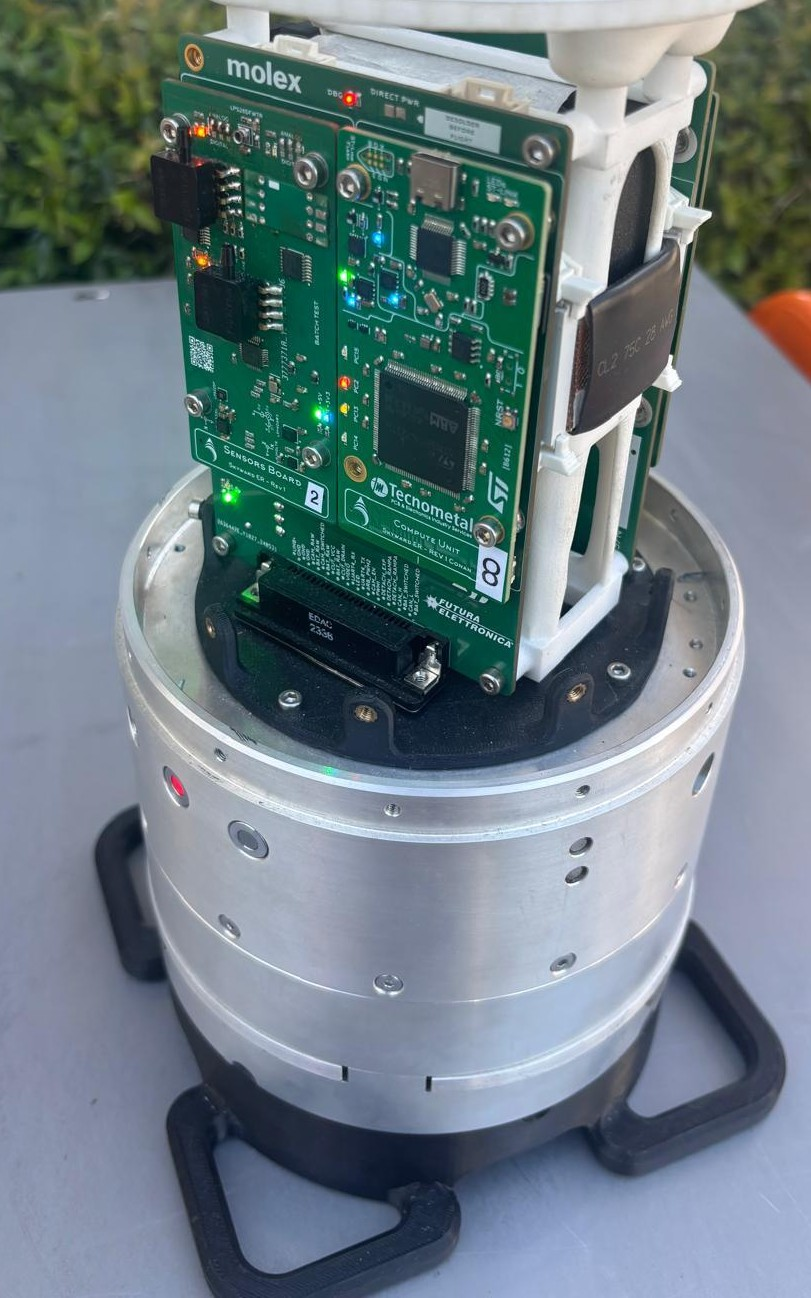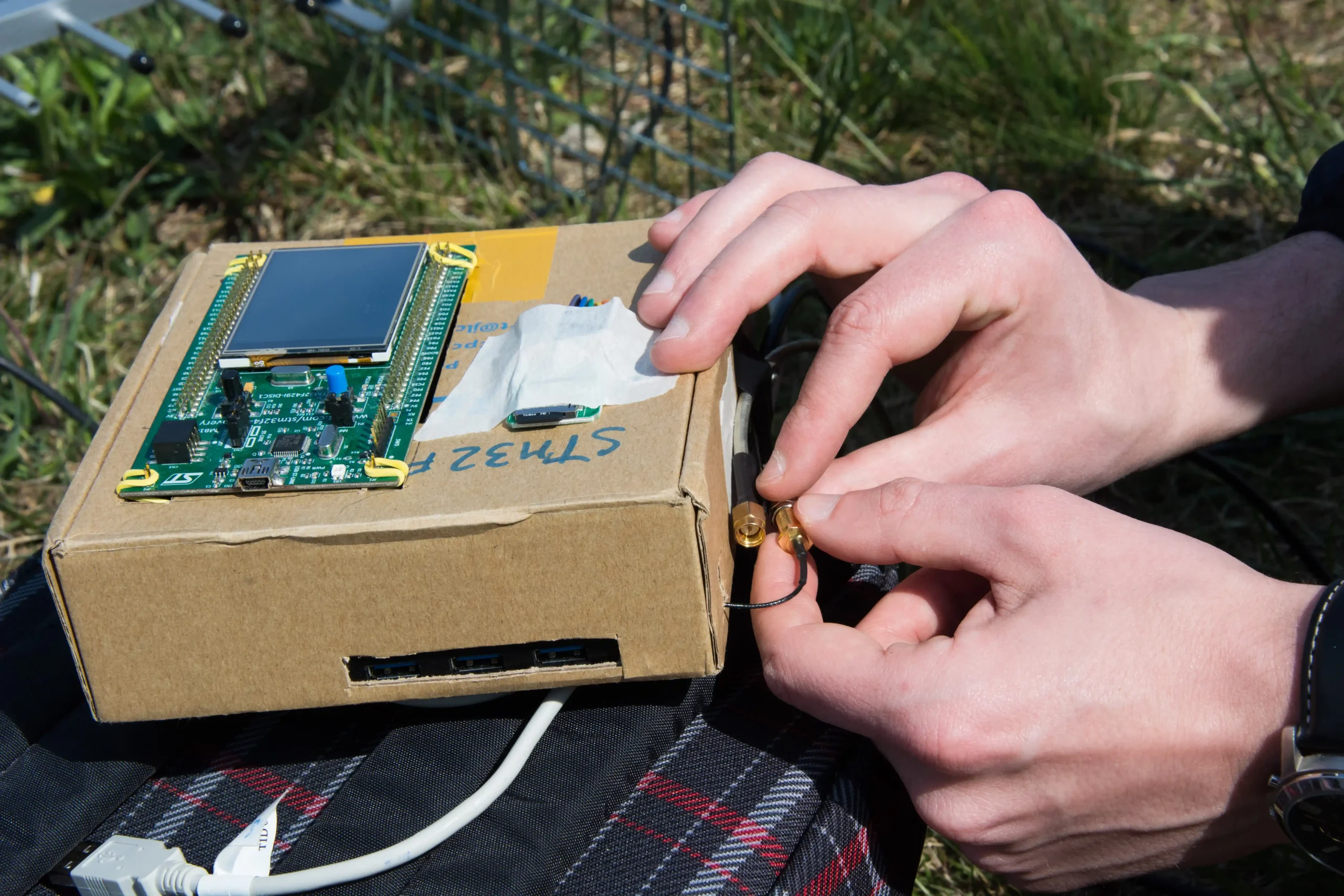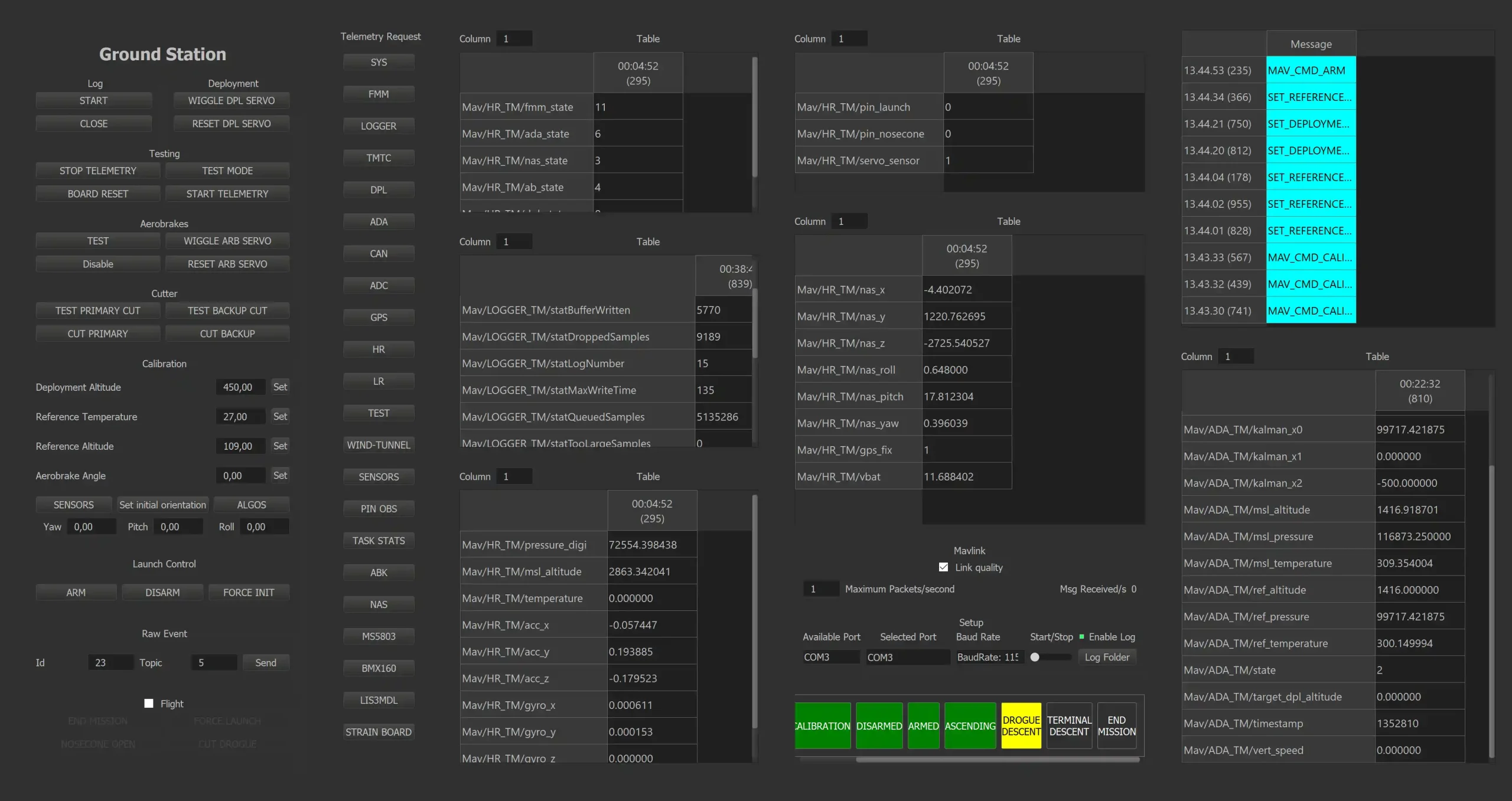On-Board Software
The on-board software is built from the ground up, starting with platform-specific peripheral and sensor drivers and extending to reusable high-level components that manage all flight phases. It runs on Miosix, a custom real-time operating system developed at Politecnico di Milano. Additionally, we implement the algorithms developed by the Guidance, Navigation, and Control IPT to ensure accurate and reliable flight performance. During flight, the main tasks of our rockets’ on-board software are: - Engine ignition and shutdown control - Precise apogee control through the air brakes - Apogee detection - Drogue and parachute deployment - Logging the data from all on-board sensors - Receiving commands and sending telemetry to the ground station


